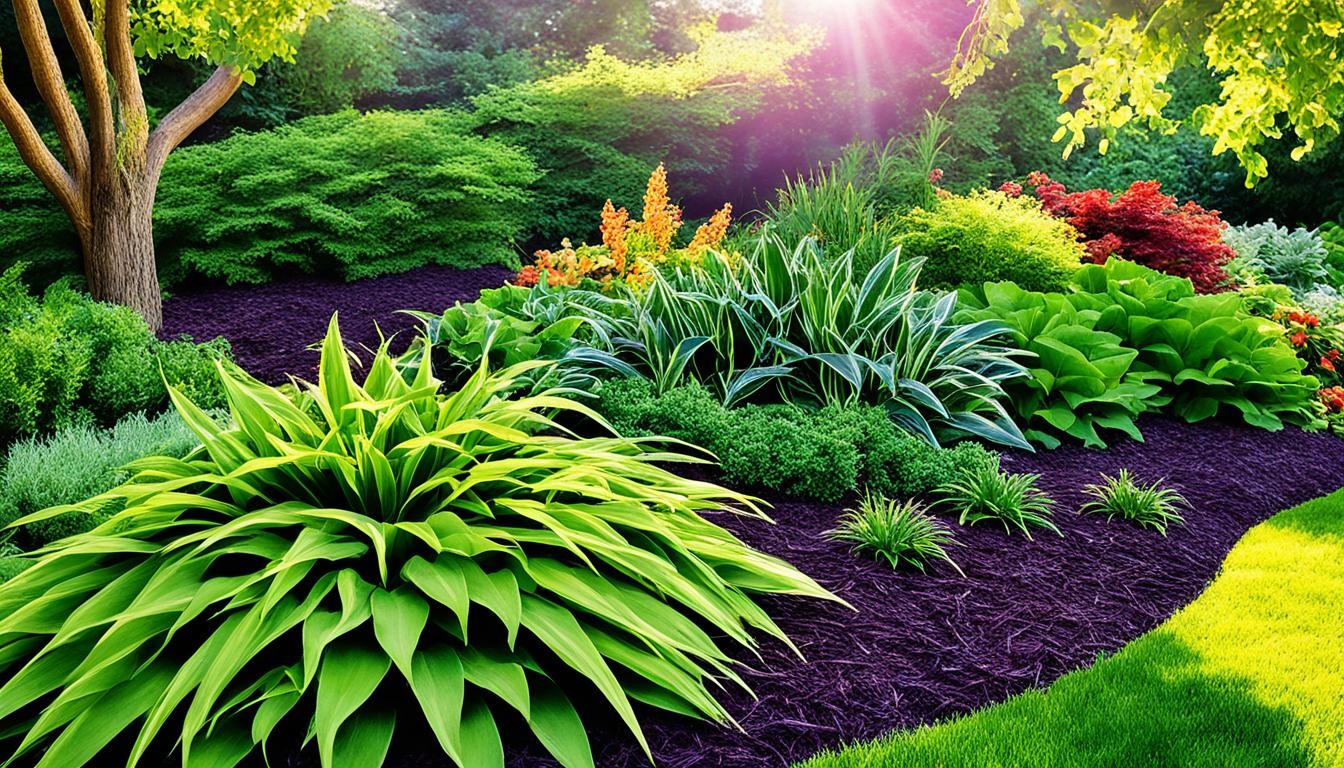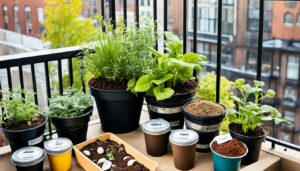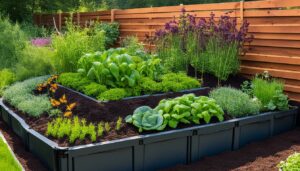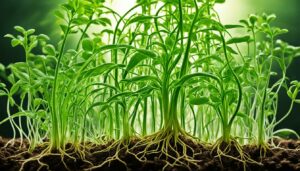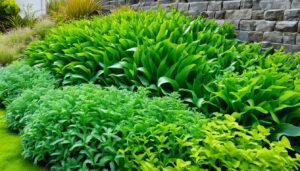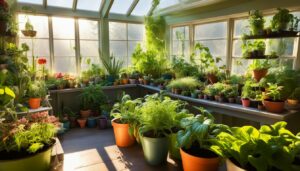Imagine a garden that thrives, not just through meticulous care and choicest seeds, but also through the heart of nature’s own cycle of life. Organic mulching, a cornerstone of eco-friendly gardening, embodies this cycle by using natural materials to nurture the garden bed. The benefits are boundless: improved soil health, vibrant plant growth, and a harmonious, sustainable landscape nestled right outside your door. But it’s not just about the results — it’s about participation in an age-old practice of giving back to earth what it has lent us, utilizing DIY garden solutions. Here, within your own slice of nature, you become a caretaker of a living, breathing ecosystem where every leaf, every scrap of organic matter, counts.
Forget about store-bought mulches for a moment; let’s delve into the world of sustainable landscape practices where your yard waste becomes your most prized asset. This is where nurturing your garden becomes an act of environmental stewardship, as simple yet profound as the soil beneath your feet.
Key Takeaways
- Organic mulching is fundamental for enhancing the health and growth of garden plants naturally.
- DIY garden solutions promote eco-friendly gardening by repurposing common yard waste into mulch.
- Sustainability in landscaping goes beyond planting — it includes nurturing the soil with what nature provides.
- Implementing homemade mulches contributes to soil moisture conservation and weed suppression.
- Using organic mulch is a proactive step towards fostering richer biodiversity in home gardens.
- Eco-conscious habits in gardening can have a positive, long-lasting impact on the environment.
The Importance of Mulching in Sustainable Gardening Practices
Understanding the critical role of mulching is fundamental for those who aspire to embrace sustainable gardening practices. At its core, the mulch serves as a multifunctional tool that boosts your garden’s health and efficiency. It not only combats weeds naturally, circumventing the need for chemical herbicides, but also lays the groundwork for enhanced soil moisture retention. The benefits don’t end here—mulching has a proven track record of maintaining an even soil temperature, providing your plants with a stable environment to thrive in.
The use of environmentally friendly garden mulch is particularly impactful for conserving water resources. By creating a barrier that reduces evaporation, mulch can cut your garden’s water requirements by a staggering 50%. This not only bolsters the eco-friendliness of your practices but also makes a compelling case from an economic perspective. In addition, the incorporation of mulch in vegetable gardens has been credited with potentially increasing harvest yields – a boon for both amateur and seasoned horticulturists.
Commencing a mulching regimen might seem daunting, especially for novices. Yet, mulching techniques for beginners are accessible and implementable with minimal prior knowledge. The key is to start simple, choosing materials readily available and appropriate for your garden setup. Whether you opt for organic options like straw or compost or even recycled newspaper, mulching is an eco-conscious step towards a flourishing garden ecosystem.
To reiterate, mulching is more than just covering the ground—it’s a commitment to responsible stewardship of your garden. By integrating these techniques into your gardening routine, you ally with nature’s rhythm, crafting an environment that delights in its autonomy while gently guided by your hand. As you refine your mulching strategy, you’ll not only see a vibrant garden before you but also be part of something bigger: a collective movement towards a more sustainable, life-affirming approach to tending the Earth.
Organic Mulching, Homemade Mulch Recipes, Garden Mulch Options
Embracing organic mulching techniques in your garden not only aids in retaining soil quality and moisture but also plays a crucial role in eco-friendly landscaping practices. Among the myriad of homemade mulch recipes available, each material offers unique organic mulch benefits that cater to different gardening needs. Let’s delve into the various natural mulch materials and their roles in nurturing a thriving garden ecosystem.
Compost: The All-Star of Organic Mulching
Widely renowned for its soil-enriching capabilities, compost as mulch is a heavyweight champion in the realm of organic garden care. Offering a significant boost to soil texture and fertility, compost enriches the environment with essential nutrients, making it an excellent choice for fortifying vegetable gardens.
Dry Leaves: A Natural Bounty for Garden Mulch
The simple act of collecting dry leaves can yield a bounty of benefits for your garden beds. Acting as a robust top-layer mulch, these leaves break down to enrich the soil, capturing the essence of organic recycling. As winter’s chill fades, your spring garden will awaken to a humus-rich foundation prepped for planting.
Newspaper and Cardboard: Eco-Friendly and Accessible Mulches
For a quick-and-easy weed suppression solution, look no further than your stack of old newspapers and cardboard boxes. When dampened, these biodegradable options provide an excellent mulching layer, which the earth’s organisms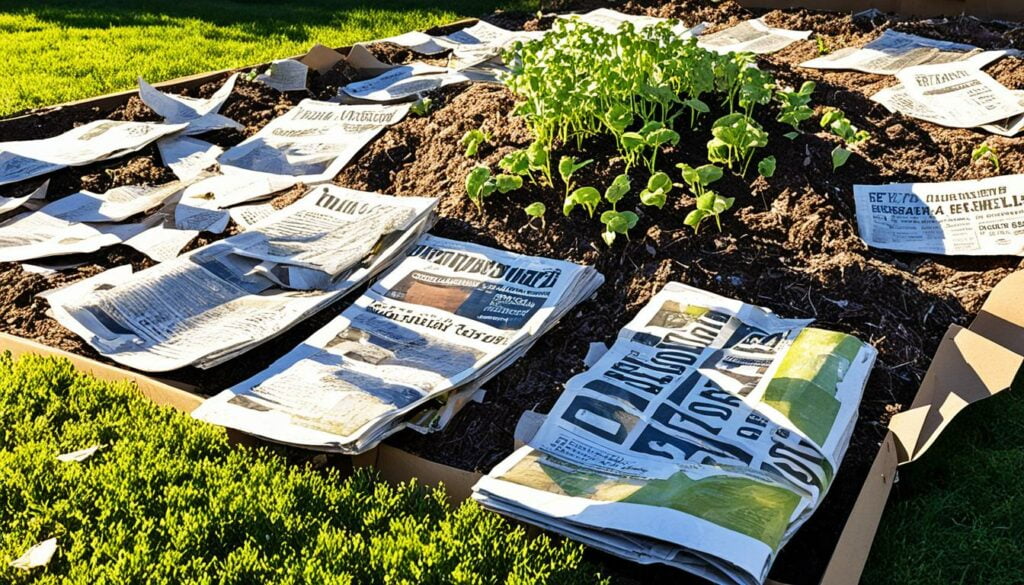
Straw and Seedless Hay: Traditional Yet Effective
Transitioning to the rustic charm of straw and seedless hay reveals a traditional approach to maintaining soil moisture. Ideal for the utilitarian spaces of your garden, these materials excel in their functionality, particularly within the productive patches of your vegetable garden.
Wood Chips and Shredded Bark: Long-Lasting Mulch Solutions
For those seeking a more enduring mulch solution, the slow decomposition of wood chips and shredded bark provides a long-lasting mulching effect. Perfect for perennial flowerbeds and shrubs, these coarse materials contribute to a polished, well-maintained garden appearance.
Grass Clippings: Nitrogen-Rich Mulch for Vegetable Gardens
Grass clippings are a green thumb’s ally in elevating nitrogen levels within the soil. When layered appropriately, they provide an immediate nutrient boost, particularly beneficial for the demanding needs of growing vegetable plants.
Living Mulch: Using Plants as a Mulch Alternative
Not to be overlooked is the innovative concept of living mulch—plants serving as a living, breathing ground cover. This method offers a harmonious integration of plant life that fosters an ecosystem where moisture is conserved, and weeds find little room to thrive.
In understanding how each type of organic mulch can be optimized for varying gardening situations, we pave the way for healthier plants and a more resilient garden environment. By selecting the appropriate organic mulch, we further the cycle of life in our gardens, contributing to a sustainable world, four seasons at a time.
Step-by-Step Guides for DIY Organic Mulch Creation
Creating your own DIY organic mulch is a straightforward and sustainable way to enrich your garden while saving on costs. This robust guide will introduce you to various homemade mulch recipes easily crafted from basic garden waste. By following these simple instructions, you’ll be on your way to a more fertile and healthy garden.
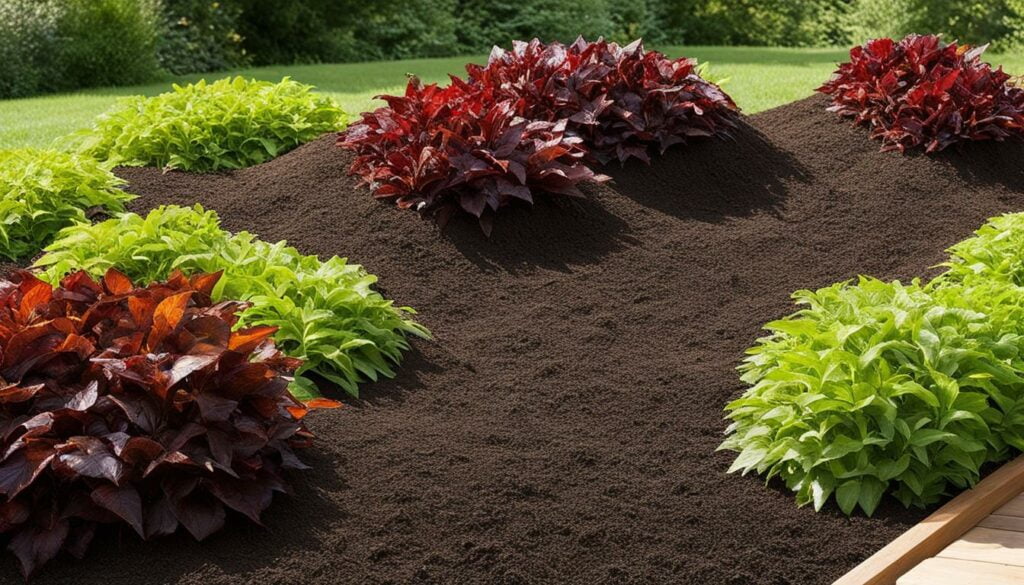
Let’s start with the leaf mulch, which is incredibly beneficial for soil health. Gather your dry leaves and pass them through a lawnmower to shred them into finer particles. This increases the surface area and helps them decompose faster, feeding your soil with vital nutrients.
When it comes to wood materials, such as branches or bark, a chipper can turn these into wood chips perfect for perennials and trees. These larger pieces decompose over time, which ensures a steady supply of organic matter to your soil.
Now, let’s not forget those grass clippings. Make sure to spread them out and dry them before use. This prevents matting, which could otherwise suffocate your plants. Apply a thin layer around your vegetables for a quick nitrogen boost.
For an effective weed suppressant, newspapers can be your ally. Lay multiple sheets directly on the soil around the plants and moisten them to hold them down. They will gradually break down and can be turned into the soil at the end of the season for added organic material.
Mixing different types of organic materials can result in the perfect mulch blend for your garden. Here’s a simple recipe to get you started:
| Component | Benefit | Application Tip |
|---|---|---|
| Dry Leaves | Improves soil structure and fertility | Shred with a lawnmower |
| Wood Chips | Slow to decompose, which stabilizes soil | Best for around trees and perennials |
| Grass Clippings | Adds nitrogen to the soil | Dry first and use in thin layers |
| Newspaper | Blocks weeds and retains moisture | Layer wet newspaper sheets around plants |
With your homemade mulch recipes ready, it’s time to nurture your garden. Remember, the best mulch is the one that not only preserves moisture and deters weeds but also integrates into your soil’s ecosystem, enhancing its overall health and productivity.
Conclusion
As we wrap up our exploration of organic mulching, it’s evident that the use of natural mulch materials isn’t just a trend; it’s a transformative practice for any garden. By integrating homemade mulch options such as compost, leaves, and grass clippings, both novice and experienced gardeners can significantly enhance the vitality and resilience of their plants. Organic mulching does more than improve the aesthetic appeal of a garden – it builds a foundation for a healthy, sustainable ecosystem right in your backyard.
Maximizing Garden Health with Homemade Mulch Options
When we talk about maximizing garden health, we focus on fostering robust growth while maintaining an ecological balance. It’s here that organic mulching shows its true value. A simple layer of mulch can regulate soil temperature, maintain moisture levels, and introduce beneficial organisms that enrich the soil. The result? A garden that’s not just surviving, but thriving, bolstered by the very best that nature has to offer.
Embracing Eco-Friendly Mulching Solutions for a Greener Tomorrow
Eco-friendly gardening practices are more than a responsibility; they are a privilege and a joy for those who love their patch of green. By choosing sustainable methods such as organic mulching, gardeners join a growing community dedicated to preserving our planet’s health. It’s a conscious choice to reduce waste, recycle resources, and foster biodiversity. Indeed, by embracing such practices, we step closer towards a greener, more productive tomorrow, ensuring our gardens and our world flourish side by side.

